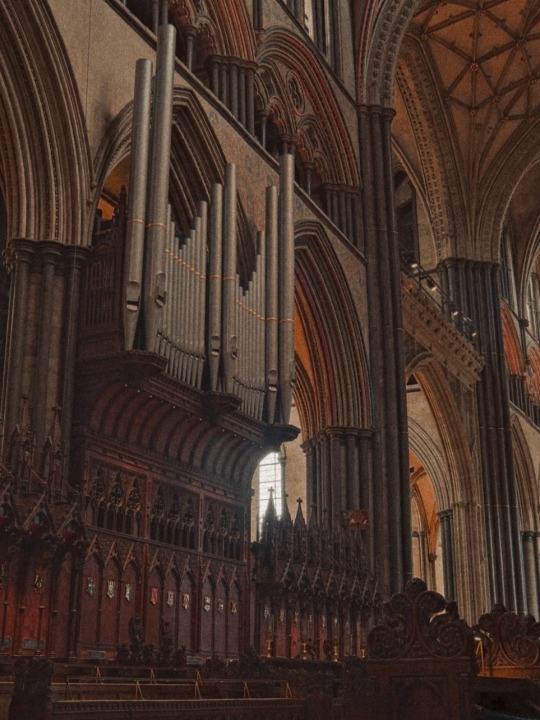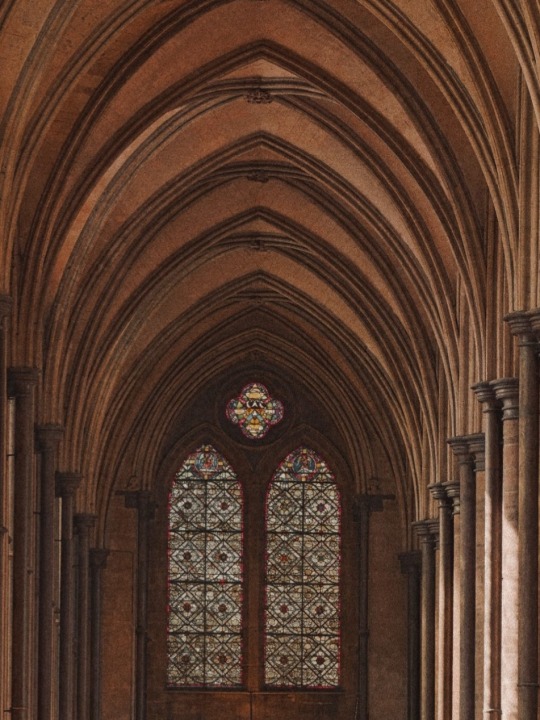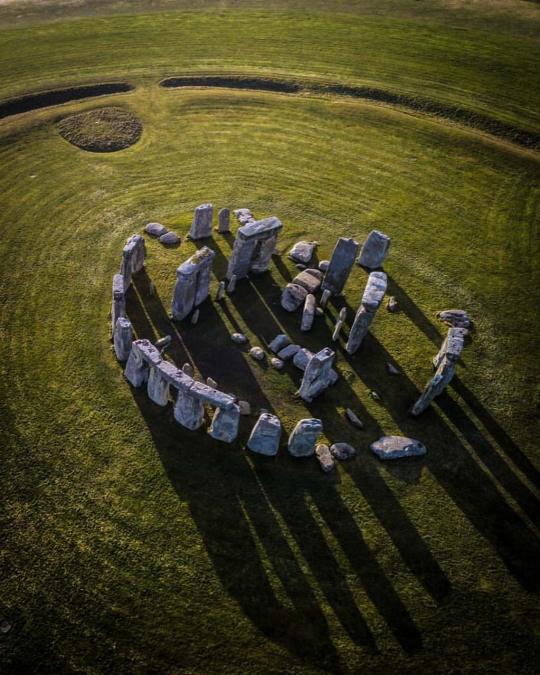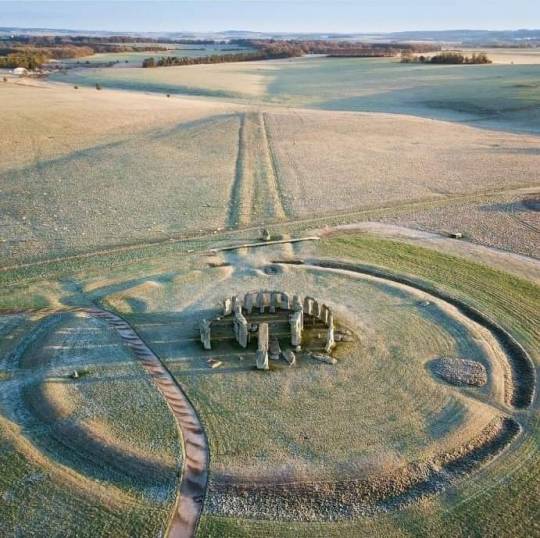#Salisbury England
Explore tagged Tumblr posts
Video
Salisbury Cathedral by Roy Llowarch Via Flickr: Travelled up to Salisbury today to revisit the wonderful cathedral. It has the tallest spire in the United Kingdom. I climbed to the top of the spire last time I visited back in 2014. The tower is not open at the moment due to Covid-19 rules on social distancing. Salisbury cathedral is one of our newer Norman cathedrals as it was not built until 1220AD. Sadly the weather today as you can see was cloudy and overcast. en.wikipedia.org/wiki/Salisbury_Cathedral
#Salisbury Cathedral#Salisbury#Salisbury England#Wiltshire#Cathedrals#Medieval#Medieval Architecture#Medieval England#Medieval Churches#Churches#Gothic#Gothic Architecture#Gothic Cathedrals#Norman England#Norman Architecture#Norman#Early English Gothic Architecture#English Gothic Architecture#Early English Architecture#Anglo-Catholic#Anglo-Catholicism#Church Of England#Anglican#Anglican Church#Anglican Cathedrals#Anglicanism#Protestant#Architecture#England#English
45 notes
·
View notes
Text




Salisbury Cathedral by leevistal.
#anglican#salisbury cathedral#church#church architecture#church aesthetic#england#english literature#english#english art#alternative#aesthetic#dark academia#dark academic aesthetic#dark aesthetic#aestheitcs#dark#art#light acadamia aesthetic#light academia
2K notes
·
View notes
Text

S T O N E H E N G E
250 notes
·
View notes
Text

Stonehenge with a carriage and travellers on horseback by James Ross
#james ross#art#stonehenge#carriage#wiltshire#salisbury plain#english#british#britain#england#neolithic#bronze age#standing stones#menhir#megalith#prehistoric#prehistory#horses#travellers#dog#dogs#stones#landscape#europe#european#megalithic
148 notes
·
View notes
Text

Salisbury, Britain's tallest cathedral, on a sun-drenched spring day.
#Salisbury Cathedral#Wiltshire#Church of England#UK#tulips#bluebells#springtime#Gothic architecture#mediaeval#404'#tallest spire#perpendicular#sacred space#13th century
108 notes
·
View notes
Text



The Prince of Wales, Colonel of the Welsh Guards visits the 1st Battalion Welsh Guards to hear how they have been transitioning from ceremonial duty back to the Field Army at Salisbury Plain in Wiltshire, England -November 26th 2024.
📷 (2 & 3) : Andrew Parsons/Kensington Palace.
#prince william#prince of wales#british royal family#england#2024#november 2024#1st battalion welsh guards#salisbury plain#welsh guards#the wales#my edit
33 notes
·
View notes
Text

A Benedictine monk wheels a fellow monk in his wheelchair past one of artist Sophie Ryder's sculptures of a lurcher and a Lady Hare sitting on top of a horse in The Close, outside the cathedral, Salisbury, England, 2016 - by Ian Berry (1934), English/South African
63 notes
·
View notes
Text

Remnants of a ringed iron age hill fort built at Old Sarum, dated to 400 B.C., plus later structural remnants, in Salisbury, England.
967 notes
·
View notes
Text

Stonehenge 1987, Salisbury Plain, Wiltshire, England
50 notes
·
View notes
Text
The Prince of Wales Visits The Welsh Guards








Prince William, Colonel of the Welsh Guards, visits the 1st Battalion Welsh Guards at Salisbury Plain on 26 November 2024 in Wiltshire, England.
📸: Karwai Tang / WireImage
#prince william#prince of wales#british royal family#1st Battalion Welsh Guards#Colonel of the Welsh Guards#Welsh Guards#Salisbury Plain#Wiltshire#England
16 notes
·
View notes
Text

A scene from the very last Stonhenge Free Festival.
Salisbury Plain, England
1984
#vintage camping#campfire light#england#salisbury plain#camping#road trips#outdoor concert#stonehenge#festival
144 notes
·
View notes
Text

Sheep relax among the sunny morning mist in the Harnham Water Meadows under the spire of Salisbury Cathedral. England, UK.
The Times in Pictures
#england#countryside#britain#english countryside#summer#salisbury#sheep#cathedral#dawn#sunrise#nature photography#europe
31 notes
·
View notes
Text

By Copter_Shot
Stonehenge, Salisbury, Wiltshire, England
#curators on tumblr#england#united kingdom#travel#stonehenge#wiltshire#uk#great britain#northwestern europe#been#aerial#architecture#salisbury#copter shot
28 notes
·
View notes
Text

S T O N E H E N G E
#stonehenge#prehistoric#megalithic#structure#estructura#megalitica#prehistorica#salisbury#plain#wiltshire#england#inglaterra#united kingdom#reino unido#europe#europa
351 notes
·
View notes
Text

Salisbury Cathedral from the Bishop's Grounds by John Constable
#john constable#art#salisbury cathedral#england#medieval#gothic#cathedral#cathedrals#gothic architecture#gothic cathedrals#landscape#english#pastoral#cows#cattle#romantic#romanticism#sky#clouds#trees#architecture#christian#christianity
310 notes
·
View notes
Text


The thatched villages of Wiltshire speak to a vanished way of life..
#The Woodfords#Wiltshire#thatched roof#yesteryear#UK#English villages#Salisbury#vintage photography#rural britain#shopkeeper#schoolhouse#nostalgia#Old England#1900's
85 notes
·
View notes